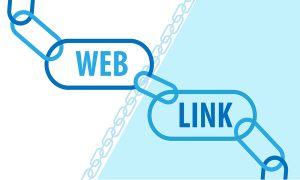In today’s digital era, having an online presence is essential for businesses and individuals alike. However, simply having a website is not enough to attract and retain visitors. To stand out in a crowded digital landscape, you need to optimize your website content effectively.
Website content optimization involves creating valuable, relevant, and engaging content that not only resonates with your target audience but also ranks well on search engines. Optimize your website content through these easy to follow tricks and see how much more traffic your site starts attracting.
Know Your Audience
 The foundation of effective content optimization is understanding your target audience. Conduct thorough market research to identify the preferences, pain points, and interests of your potential visitors. Create buyer personas to represent your ideal customers, which will help you tailor your content to meet their specific needs and preferences.
The foundation of effective content optimization is understanding your target audience. Conduct thorough market research to identify the preferences, pain points, and interests of your potential visitors. Create buyer personas to represent your ideal customers, which will help you tailor your content to meet their specific needs and preferences.
Conduct Keyword Research
 Keyword research is a critical step in content optimization. It involves identifying the words and phrases that your target audience is using to search for products, services, or information related to your niche. Use tools like Google Keyword Planner, SEMrush, or Ahrefs to discover relevant keywords with a balance of search volume and competition. Incorporate these keywords strategically throughout your content, including in titles, headings, meta tags, and body text.
Keyword research is a critical step in content optimization. It involves identifying the words and phrases that your target audience is using to search for products, services, or information related to your niche. Use tools like Google Keyword Planner, SEMrush, or Ahrefs to discover relevant keywords with a balance of search volume and competition. Incorporate these keywords strategically throughout your content, including in titles, headings, meta tags, and body text.
Create High-Quality, Valuable Content
 As cliché as it sounds, high-quality content is the backbone of successful website optimization. Focus on providing valuable and informative content that addresses the needs and queries of your audience. Avoid keyword stuffing or producing shallow content solely for the sake of SEO. Search engines are increasingly emphasizing content quality and user experience, so aim to deliver content that is genuinely helpful and engaging.
As cliché as it sounds, high-quality content is the backbone of successful website optimization. Focus on providing valuable and informative content that addresses the needs and queries of your audience. Avoid keyword stuffing or producing shallow content solely for the sake of SEO. Search engines are increasingly emphasizing content quality and user experience, so aim to deliver content that is genuinely helpful and engaging.
Use Engaging Headlines and Subheadings
 Compelling headlines and subheadings can significantly impact how users engage with your content. Craft attention-grabbing headlines that promise a solution, answer a question, or evoke curiosity. Subheadings should break down your content into digestible chunks, making it easier for users to scan and find relevant information.
Compelling headlines and subheadings can significantly impact how users engage with your content. Craft attention-grabbing headlines that promise a solution, answer a question, or evoke curiosity. Subheadings should break down your content into digestible chunks, making it easier for users to scan and find relevant information.
Optimize Meta Tags
 Meta tags, including meta titles and meta descriptions, play a crucial role in search engine rankings and click-through rates. Your meta title should include your primary keyword and provide a concise and compelling description of your page’s content. Meta descriptions should be descriptive and persuasive, encouraging users to click through to your website.
Meta tags, including meta titles and meta descriptions, play a crucial role in search engine rankings and click-through rates. Your meta title should include your primary keyword and provide a concise and compelling description of your page’s content. Meta descriptions should be descriptive and persuasive, encouraging users to click through to your website.
Make Use of Multimedia
 Incorporate multimedia elements such as images, videos, infographics, and interactive content to enhance user engagement. Visual content not only makes your website more appealing but also helps convey information more effectively. Optimize images by compressing them for faster loading times without compromising quality.
Incorporate multimedia elements such as images, videos, infographics, and interactive content to enhance user engagement. Visual content not only makes your website more appealing but also helps convey information more effectively. Optimize images by compressing them for faster loading times without compromising quality.
Prioritize Readability and Formatting
 A well-formatted and easy-to-read content is vital for keeping visitors on your website. Use clear and concise sentences, avoid jargon, and break up lengthy paragraphs into smaller chunks. Utilize bullet points, numbered lists, and bold/italic formatting to make important points stand out. Remember, most online users tend to scan content rather than reading it word-by-word, so optimize your content accordingly.
A well-formatted and easy-to-read content is vital for keeping visitors on your website. Use clear and concise sentences, avoid jargon, and break up lengthy paragraphs into smaller chunks. Utilize bullet points, numbered lists, and bold/italic formatting to make important points stand out. Remember, most online users tend to scan content rather than reading it word-by-word, so optimize your content accordingly.
Implement Internal Linking
 Internal linking refers to connecting different pages within your website using hyperlinks. It helps search engines discover and index your content more effectively, improves user navigation, and distributes link equity throughout your website. Link relevant anchor texts to related pages or blog posts, thus creating a cohesive website structure.
Internal linking refers to connecting different pages within your website using hyperlinks. It helps search engines discover and index your content more effectively, improves user navigation, and distributes link equity throughout your website. Link relevant anchor texts to related pages or blog posts, thus creating a cohesive website structure.
Optimize for Mobile Devices
 Ensure that your content displays correctly and is easily accessible on various screen sizes. Use responsive design to automatically adjust your content layout based on the user’s device.
Ensure that your content displays correctly and is easily accessible on various screen sizes. Use responsive design to automatically adjust your content layout based on the user’s device.
Incorporate Social Sharing Buttons
 Social media plays a significant role in content promotion and increasing your website’s visibility. Include social sharing buttons to allow visitors to easily share your content with their networks. This can lead to more exposure, increased traffic, and potential backlinks from other websites.
Social media plays a significant role in content promotion and increasing your website’s visibility. Include social sharing buttons to allow visitors to easily share your content with their networks. This can lead to more exposure, increased traffic, and potential backlinks from other websites.
Regularly Update and Refresh Content
 Search engines value fresh and updated content. Regularly update your existing content to keep it relevant and accurate. Additionally, consider repurposing and refreshing older content to make it more valuable and appealing to your audience.
Search engines value fresh and updated content. Regularly update your existing content to keep it relevant and accurate. Additionally, consider repurposing and refreshing older content to make it more valuable and appealing to your audience.
Monitor and Analyze Performance
 Finally, keep a close eye on the performance of your website content using web analytics tools like Google Analytics. Monitor metrics such as page views, time on page, bounce rate, and conversion rates to gain insights into user behavior and content effectiveness. Use this data to make data-driven decisions and continuously improve your content strategy.
Finally, keep a close eye on the performance of your website content using web analytics tools like Google Analytics. Monitor metrics such as page views, time on page, bounce rate, and conversion rates to gain insights into user behavior and content effectiveness. Use this data to make data-driven decisions and continuously improve your content strategy.
In conclusion
Remember, content optimization is an ongoing process, so continuously monitor your performance and adapt your strategies to stay ahead in the competitive digital landscape. With a well-optimized website, you can effectively engage your audience and drive success for your business and brand.

